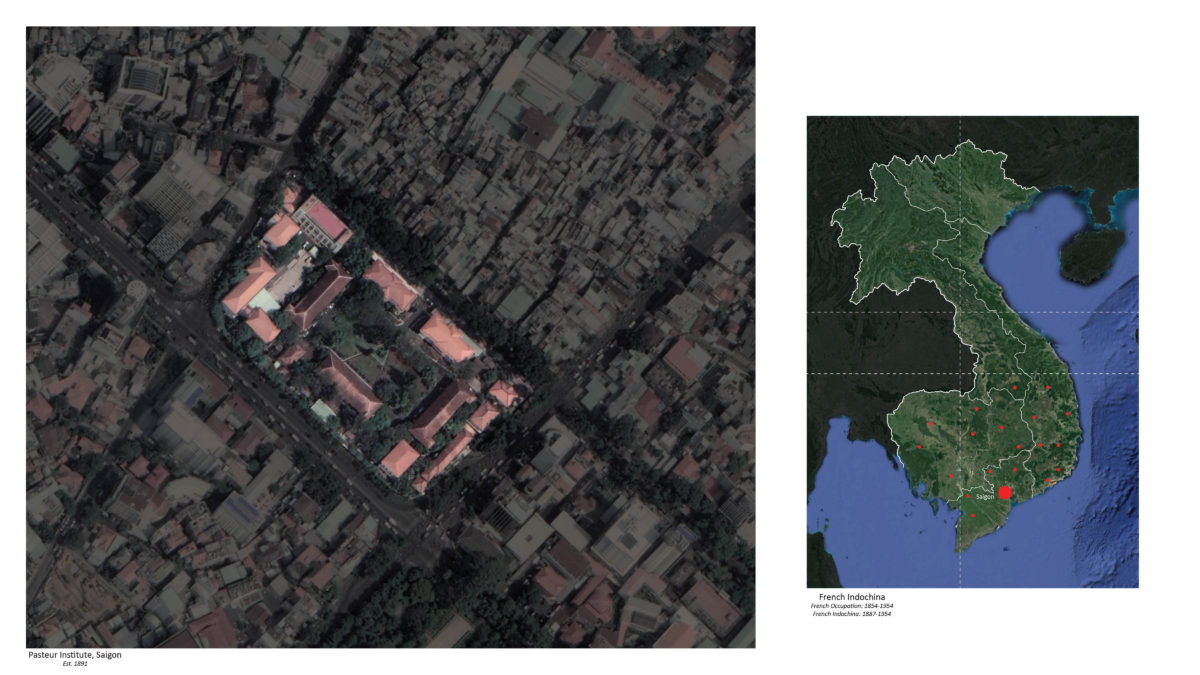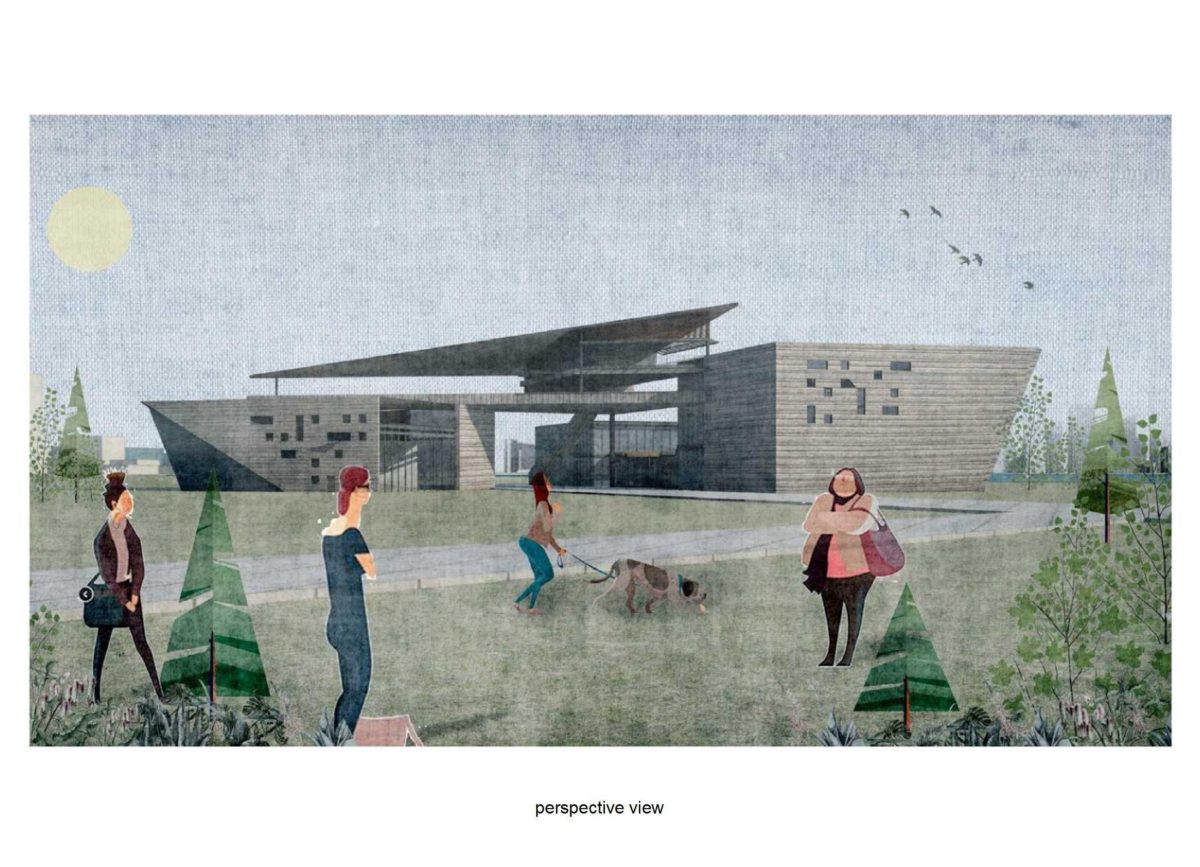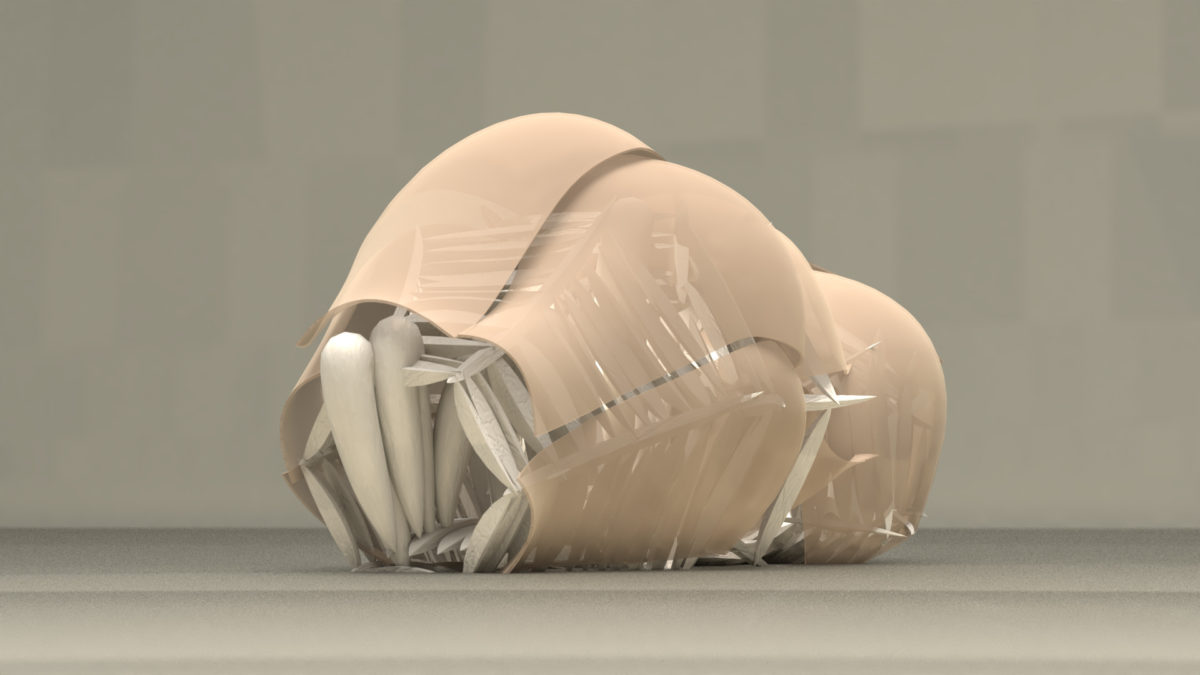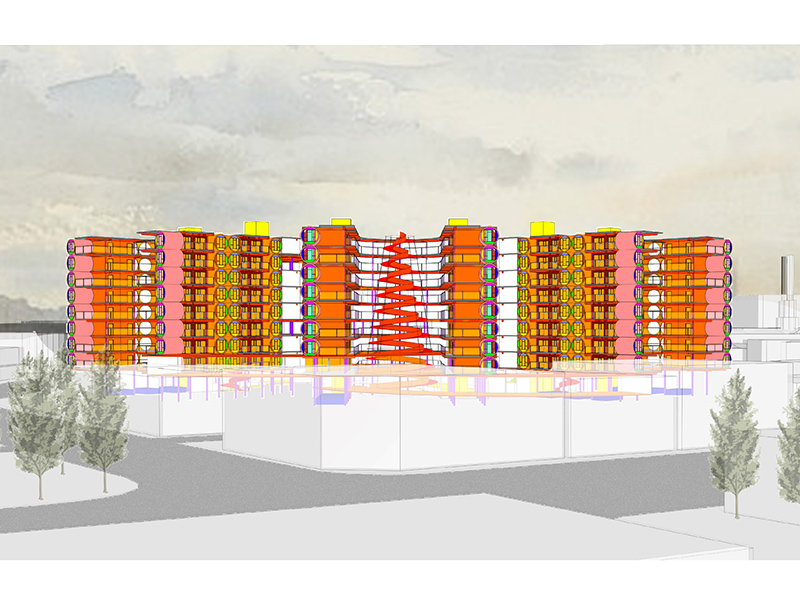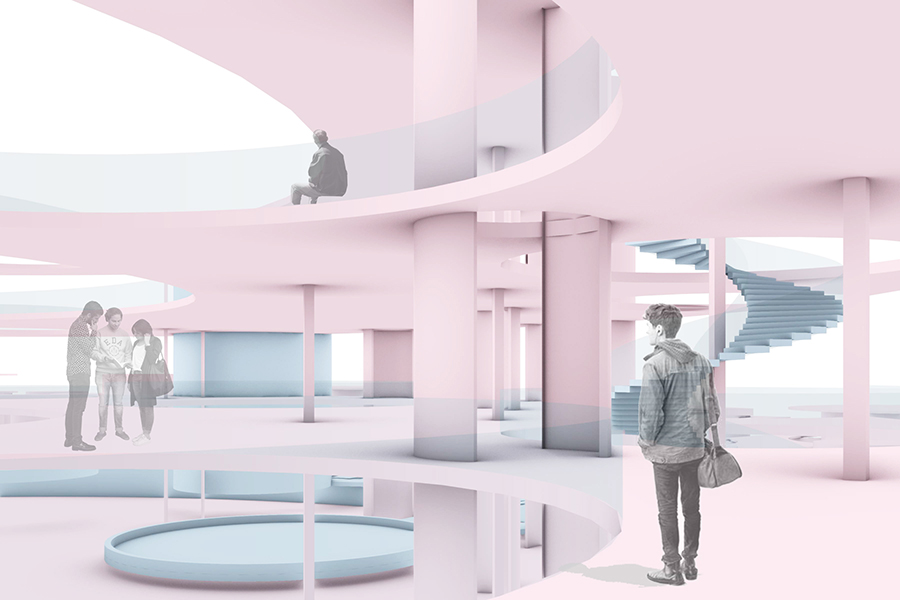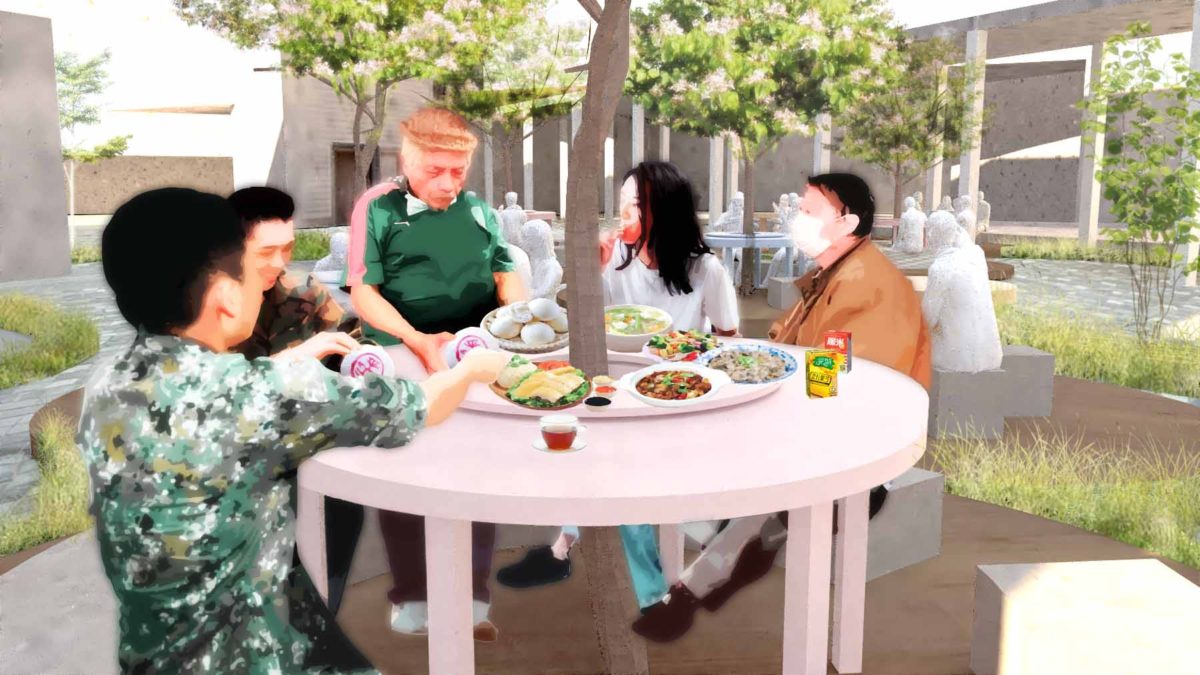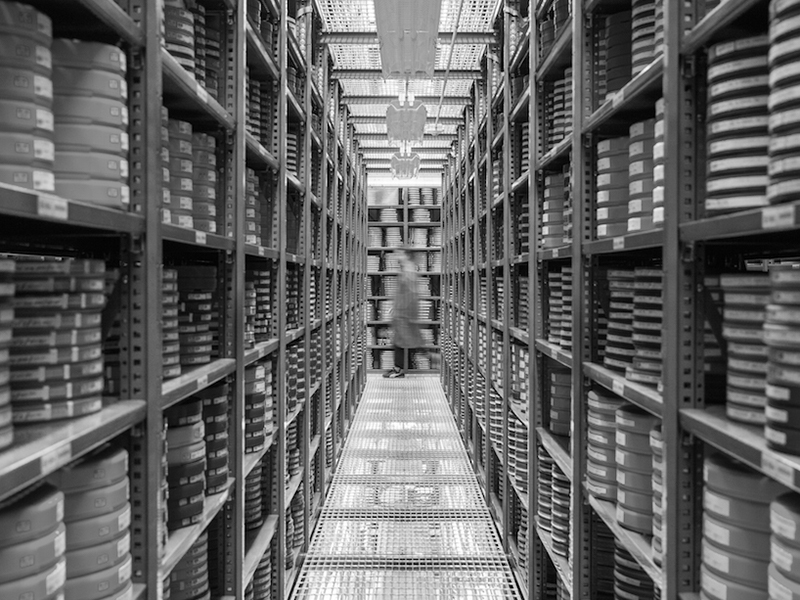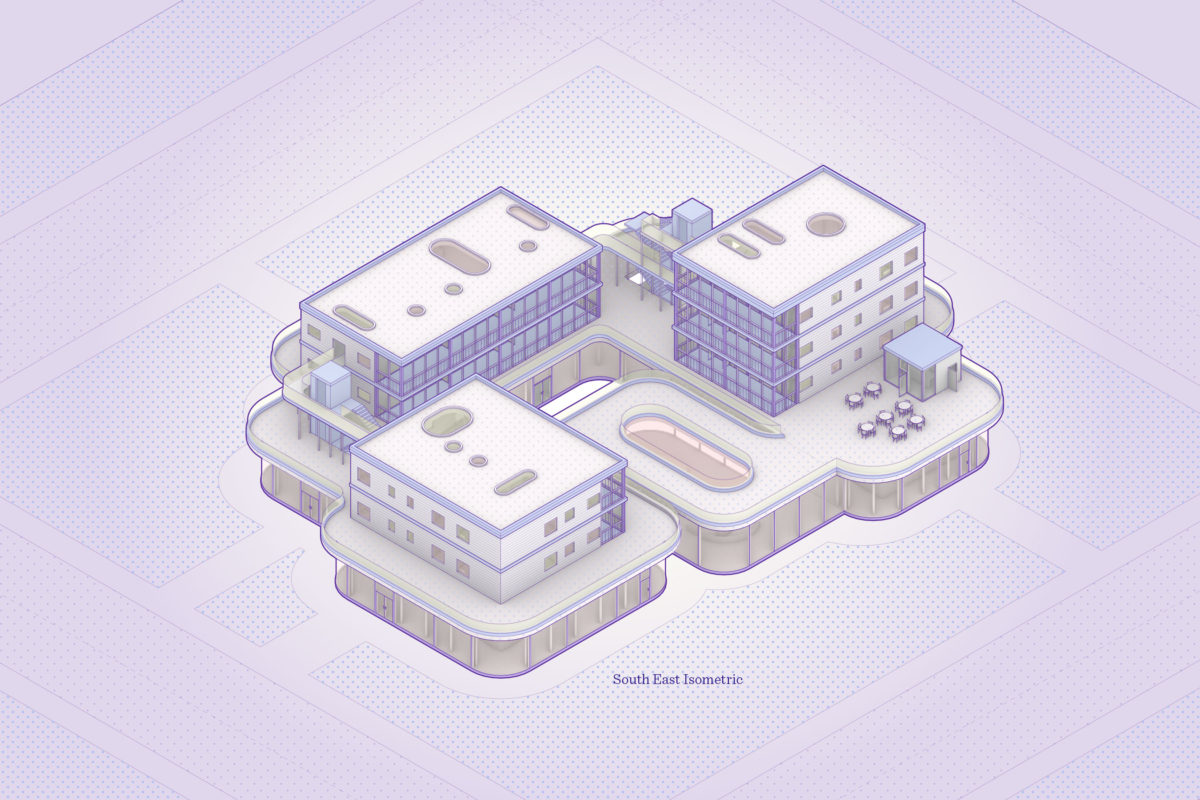Special Economic Zones (SEZs), which proliferate in Southeast Asia, are populated by a type of architecture that has no place, origin, local customs or culture. This is a project for Vietnam, a socialist country which has instituted two large SEZs it calls “Key Economic Zones.” The project studied the distribution, siting, materials and construction methods of small factory complexes (called “industrial parks” in English) in the southern Vietnamese SEZ, and imagines a new addition to what has become a repetitive building formula. The project envisions a type of small clinic, bearing the branding and architectural aesthetic of the leasing corporation (typically American or European), that would be both attractive to international corporate investors while improving the working conditions of the people working in the factories. By wedding this new building type to the industrial park formula, these new clinics/branded buildings could proliferate across SEZ construction sites.
